
loading

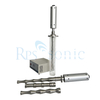

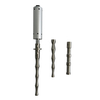

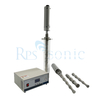

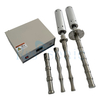

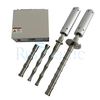

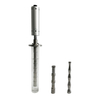
| Availability: | |
|---|---|
| Quantity: | |
RPS-SONO20
RPS-SONIC
| Place of Origin | China |
|---|---|
| Brand Name | RPS-SONIC |
| Certification | CE |
| Model Number | RPS-S20-2000 |
| Minimum Order Quantity | 1set |
| Price | negotiation |
| Packaging Details | Foam And Wood Box |
| Delivery Time | 3days |
| Payment Terms | T/T, Western Union, MoneyGram |
| Supply Ability | 200 sets per month |
Parameter
| Item | RPS-S500 | RPS-S1000 | RPS-S1500 | RPS-S2000 | RPS-S3000 |
| Working frequency | 20kHz | 20kHz | 20kHz | 20kHz | 20kHz |
| Max power | 500W | 1000W | 1500W | 2000W | 3000W |
| Handing capacity | 0.5 to 2L/min | 0.5 to 3L/min | 0.5 to 4L/min | 1.0 to 6L/min | 1.0 to 8L/min |
| Apply | Production line, be used in combination | ||||
| Reaction tank | 10L,15L,20L,35L,stainless steel | ||||
| Working pressure | Max:5MPa | ||||
| Working temperature | Max: 350°C | ||||
Description
Ultrasonic nanomaterial dispersion is the process of using ultrasonic technology to evenly disperse nanoparticles or nanomaterials in a solution or matrix. Ultrasonic waves can break up aggregated nanoparticles through cavitation effect and shear force, dispersing them into independent small particles and avoiding agglomeration or precipitation between nanoparticles, thereby obtaining a more uniform and stable nanomaterial dispersion system. This technology is widely used in the preparation of nanomaterials, preparation of nanomedicines, surface treatment, coatings, catalysts, and energy storage materials.
Application fields of ultrasonic dispersion of nanomaterials:
1. Preparation of nano drugs: Ultrasonic dispersion technology can be used to prepare nano drug carriers, such as nano drug particles, nano capsules, liposomes, etc. Ultrasonic waves can make the particle size of drug carriers smaller and more uniform, enhance the solubility and bioavailability of drugs, and are especially suitable for the dispersion of water-insoluble drugs.
2. Nano catalysts: In the preparation process of catalysts, ultrasound can effectively disperse nano catalytic particles and avoid particle agglomeration, thereby increasing the surface area and reaction activity of catalysts.
3. Nano coatings and inks: When nanoparticles are used in coatings and inks, ultrasonic dispersion technology can effectively disperse pigments or other nano materials evenly and improve the stability and adhesion of the coating. It can also improve the mechanical properties, wear resistance, corrosion resistance, etc. of the coating.
4. Surface modification of nano materials: In the surface modification of nano materials, ultrasound can effectively disperse surface treatment agents, improve the dispersion and surface functionalization of materials, and is widely used in conductive materials, optoelectronic materials and other fields.
5. Energy storage materials: Ultrasonic dispersion technology is widely used in the preparation of energy storage materials such as batteries and supercapacitors. It can ensure the uniform dispersion of active substances and improve the performance and stability of energy storage materials.
6. Environmental protection: In environmental pollution control, ultrasonic technology is used for the dispersion of nanomaterials and the distribution of water treatment agents, enhancing the dispersion performance of water treatment agents and improving the treatment effect.
7. Food and cosmetics: Ultrasonic technology can be used in the preparation of nanoemulsions in the food and cosmetics industries, such as nanoemulsified moisturizers, drug delivery systems, etc.
Parameter
| Item | RPS-S500 | RPS-S1000 | RPS-S1500 | RPS-S2000 | RPS-S3000 |
| Working frequency | 20kHz | 20kHz | 20kHz | 20kHz | 20kHz |
| Max power | 500W | 1000W | 1500W | 2000W | 3000W |
| Handing capacity | 0.5 to 2L/min | 0.5 to 3L/min | 0.5 to 4L/min | 1.0 to 6L/min | 1.0 to 8L/min |
| Apply | Production line, be used in combination | ||||
| Reaction tank | 10L,15L,20L,35L,stainless steel | ||||
| Working pressure | Max:5MPa | ||||
| Working temperature | Max: 350°C | ||||
Description
Ultrasonic nanomaterial dispersion is the process of using ultrasonic technology to evenly disperse nanoparticles or nanomaterials in a solution or matrix. Ultrasonic waves can break up aggregated nanoparticles through cavitation effect and shear force, dispersing them into independent small particles and avoiding agglomeration or precipitation between nanoparticles, thereby obtaining a more uniform and stable nanomaterial dispersion system. This technology is widely used in the preparation of nanomaterials, preparation of nanomedicines, surface treatment, coatings, catalysts, and energy storage materials.
Application fields of ultrasonic dispersion of nanomaterials:
1. Preparation of nano drugs: Ultrasonic dispersion technology can be used to prepare nano drug carriers, such as nano drug particles, nano capsules, liposomes, etc. Ultrasonic waves can make the particle size of drug carriers smaller and more uniform, enhance the solubility and bioavailability of drugs, and are especially suitable for the dispersion of water-insoluble drugs.
2. Nano catalysts: In the preparation process of catalysts, ultrasound can effectively disperse nano catalytic particles and avoid particle agglomeration, thereby increasing the surface area and reaction activity of catalysts.
3. Nano coatings and inks: When nanoparticles are used in coatings and inks, ultrasonic dispersion technology can effectively disperse pigments or other nano materials evenly and improve the stability and adhesion of the coating. It can also improve the mechanical properties, wear resistance, corrosion resistance, etc. of the coating.
4. Surface modification of nano materials: In the surface modification of nano materials, ultrasound can effectively disperse surface treatment agents, improve the dispersion and surface functionalization of materials, and is widely used in conductive materials, optoelectronic materials and other fields.
5. Energy storage materials: Ultrasonic dispersion technology is widely used in the preparation of energy storage materials such as batteries and supercapacitors. It can ensure the uniform dispersion of active substances and improve the performance and stability of energy storage materials.
6. Environmental protection: In environmental pollution control, ultrasonic technology is used for the dispersion of nanomaterials and the distribution of water treatment agents, enhancing the dispersion performance of water treatment agents and improving the treatment effect.
7. Food and cosmetics: Ultrasonic technology can be used in the preparation of nanoemulsions in the food and cosmetics industries, such as nanoemulsified moisturizers, drug delivery systems, etc.








Ultrasonic Welding Equipment Ultrasonic Welding Transducer Ultrasonic Welding Converter Ultrasonic Liquid Processor Ultrasonic Cutting Equipment Ultrasonic Spray Nozzles Ultrasonic Power Supply Ultrasonic Soldering Equipment Ultrasonic Welding Horn Ultrasonic Assisted Machining Ultrasonic Testing Equipment